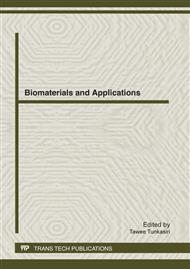p.587
p.591
p.595
p.599
p.603
p.607
p.611
p.615
p.619
Efficacy of Activated Carbon In Situ to Oil Palm Frond Paper for Active Packaging on Mechanical Properties
Abstract:
Oil palm frond pulp (OPF) was blended with activated carbon for the purpose of active packaging in this preliminary study. It was aimed to investigate the effect of in-situ activated carbon on physical and mechanical properties of the pulp handsheets made from OPF. Testing of property performances of the resulted handsheets included density, moisture content, thickness swelling, folding, tensile strength, %elongation, stiffness, and modulus of rupture. Ultimately, the intention is to use for prospected active packaging for fresh produce. OPF pulp was prepared by the kraft process. The pulp stock was mixed with different proportions of activated carbon (0, 10, 20, and 30% w/w). The results showed that an increased proportion of activated carbon decreased density and thickness selling, but had no effect on moisture content.
Info:
Periodical:
Pages:
607-610
Citation:
Online since:
April 2012
Authors:
Keywords:
Price:
Сopyright:
© 2012 Trans Tech Publications Ltd. All Rights Reserved
Share:
Citation:


